14.09.2022
Uzbekistan

Around 55% of the Uzbekistani respondents were either very or moderately concerned about the treatment of domestic labor migrants in other countries, while another 30% were not too concerned. Only 10% of the population showed no concern at all. The levels of concern on the topic among the different age, gender, and geographic groups within the Uzbekistani population was more or less uniform, with an exception of the 50-59 age group, who expressed much higher concerns, with 70% very and moderately concerned- the highest among all other demographic groups. 85% of the population expressed some level of concern.
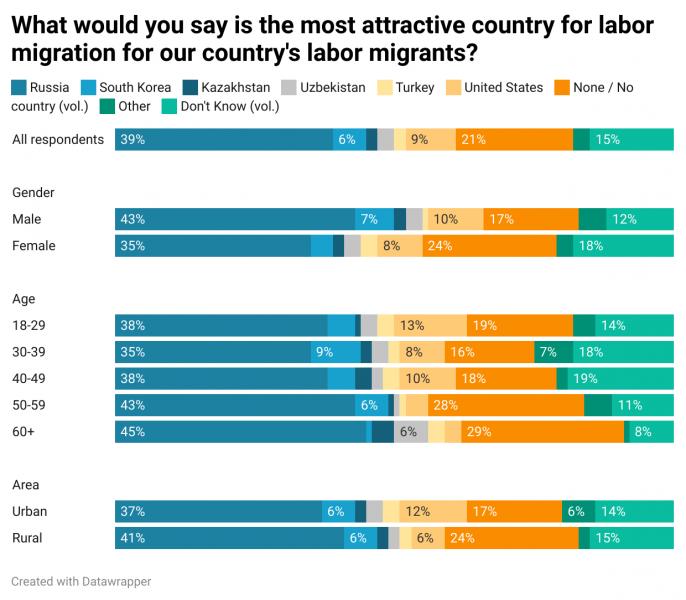
For 40% of the Uzbekistani respondents, Russia was seen as the most attractive country for labor migration, whilst around 20% reported no attractive country. Around one quarter of the respondents were divided on the issue- instead opting for nations such as Korea, the US, Turkey, and Kazakhstan, amongst others.
Kazakhstan
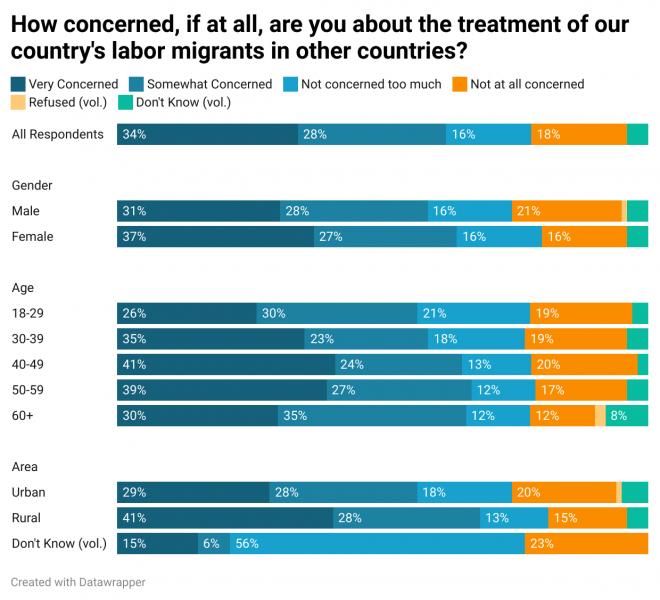
60% of Kazakhstani respondents were very or somewhat concerned about the treatment of their compatriots employed abroad. 15% were not concerned too much, and around 20% of the population reported no concern at all. The choice of response showed a clear correlation with the age of the respondent: the higher the age, the higher the concern. A clear division in opinion between rural and urban respondents was also present. Rural respondents demonstrated around 70% concern (very and somewhat concerned), with urban dwellers around 55%; the same difference is applicable to the share of those who are not at all concerned. However, the overwhelming majority of the population shows some level of concern 75%.
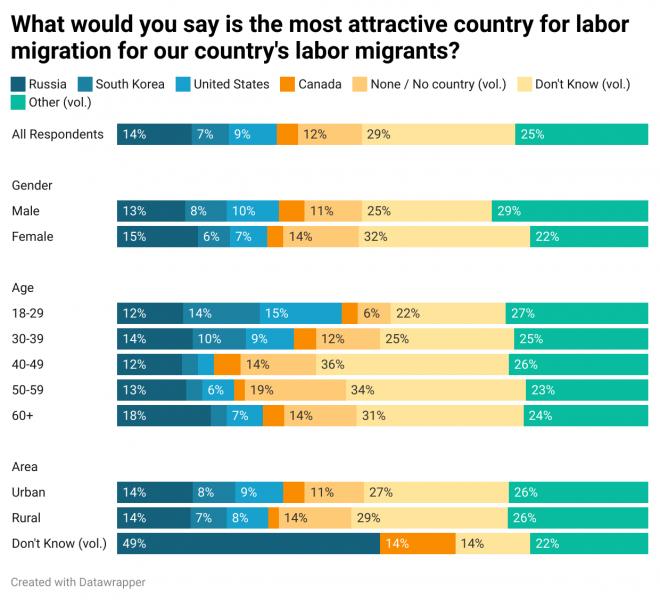
Kazakhstani respondents were also divided on the issue of the most attractive country for labor migrants. It is clear that they did not have a clear answer to this question due to the high share of those who preferred to say “do not know”, at 30%. Russia, at 14%, was slightly more popular. Among other countries, many chose the USA at 9%, or Korea at 7%. More than a quarter of the respondents said other countries were instead mostmore attractive for migration, including e.g. Canada.
Kyrgyzstan
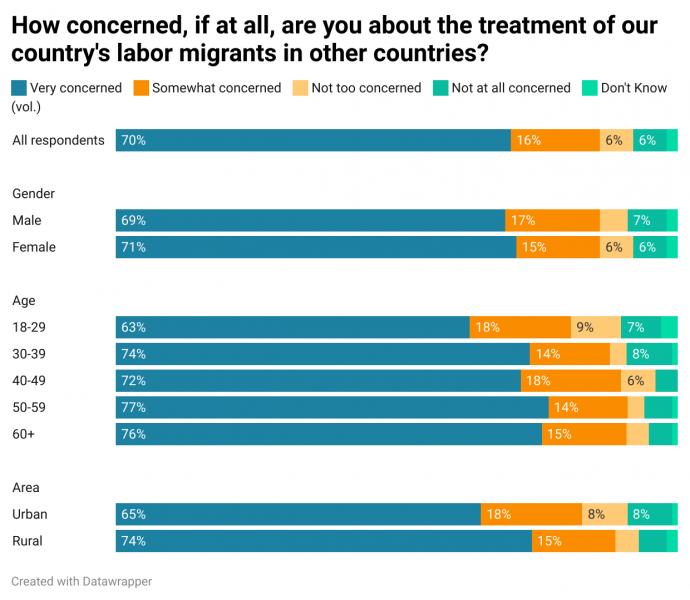
In Kyrgyzstan, the overwhelming majority of respondents were concerned about the treatment of Kyrgyzstani labor migrants abroad. 85% were very or somewhat concerned, while only 12% were not too or not at all concerned. The rural respondents expressed slightly more concern about the topic.
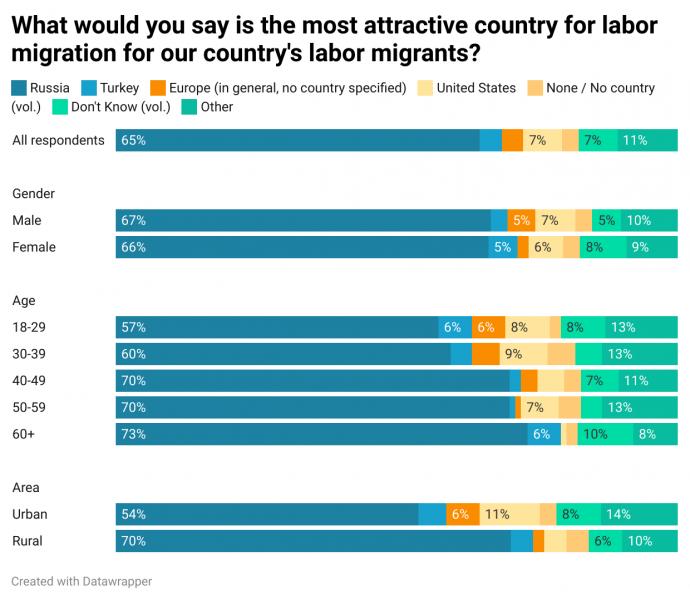
The majority of the Kyrgyzstani respondents, at 65%, believed that Russia was the most attractive country for labor migration. Around a fourth of the population believed that countries other than Russia were more attractive including Turkey, the US and European countries in general. Urban and younger respondents tended not to choose Russia as the most attractive country. 70% of rural respondents in contrast to 55% of urban respondents believed Russia was the most attractive country. There is a clear correlation with age in regards toin regard to perceiving Russia as the best country in which to work - with only approximately 55% of 18-29 year olds choosing this option compared to around 75% of the respondents older than 60 years.
Tajikistan
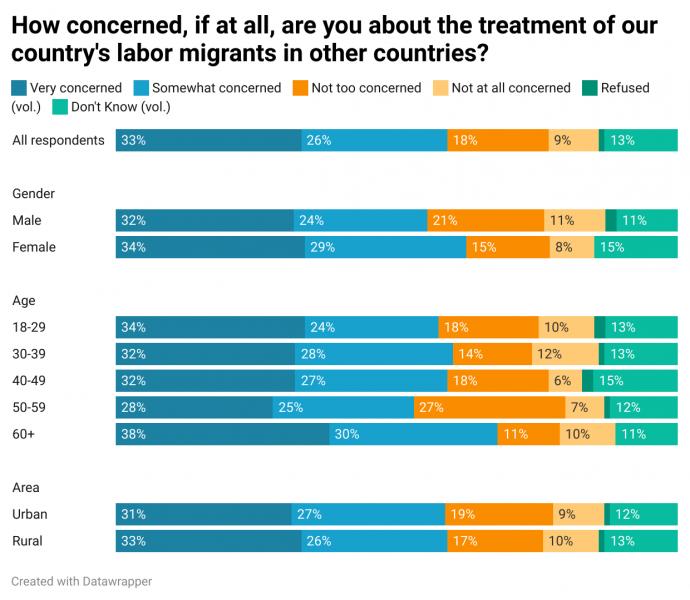
60% of Tajik respondents were very or somewhat concerned about the treatment of Tajikistani labor migrants abroad. The perceptions of different demographic groups were more or less uniform. The overwhelming majority of the Tajik population expressed some level of concern, at around 70%. The proportion of those who are concerned about the treatment of labor migrants was similar to the proportion of those who said they have a family member working abroad.
When asked about whether the respondent has a family member who works in another country, around 70% answered they have one. More females answered they have a family member abroad than the males. While 75% of females chose this option, only 55% of males reported so, which may be due to the gendered differences in Tajik labor migration patterns:
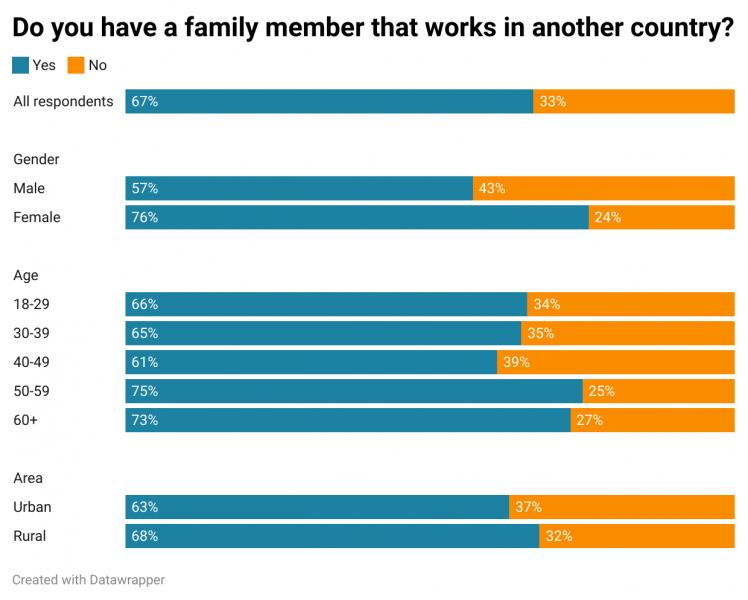
In addition to this, it appears that the majority of the Tajikistani respondents had at least one family member who work in Russia:
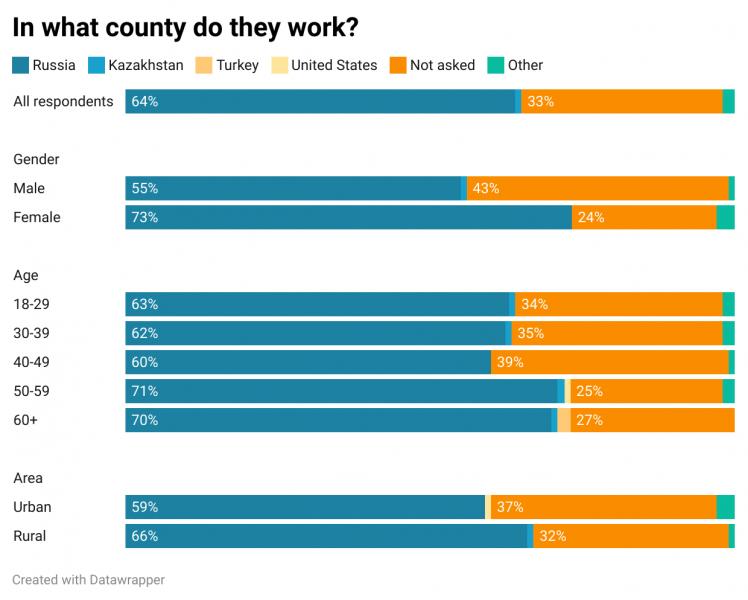
Moreover, the vast majority of Tajik respondents across all demographic groups believed that
Russia was the most attractive country in which to work:
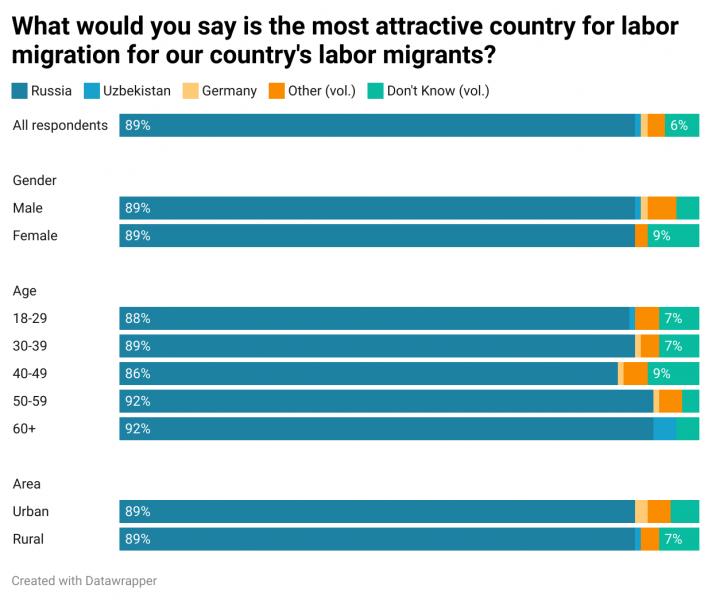
Turkmenistan
Within the Turkmen survey data, it is clear that “don’t know” was the most popular answer. This is understandable, given the response bias and individual safety precautions which respondents often needed to take because of the country’s political regime. Nearly 40% of respondents answered that they do not know how concerned they are, if at all, about the treatment of Turkmen labor migrants. In addition, 20% were not at all concerned, and around 40% were very or somewhat concerned.
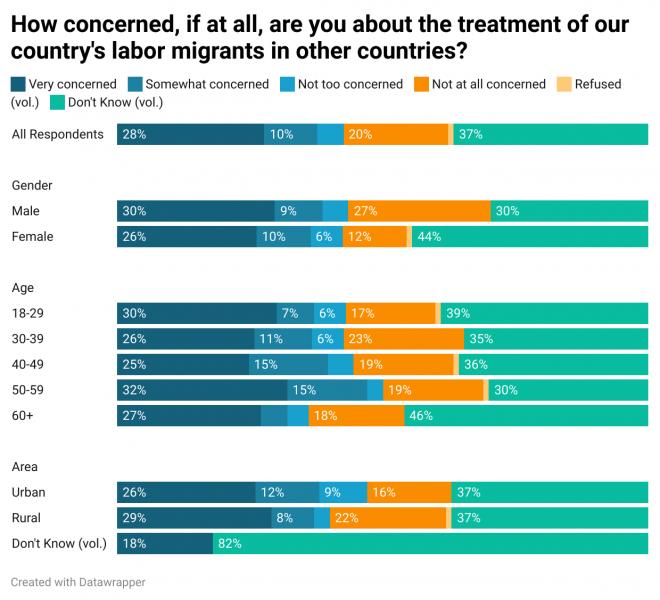
Turkmen respondents were also divided on the most attractive country for labor migration. The number of respondents which opted to say “don’t know” were still prevalent(around 30%), while 60% of respondents were more or less equally divided between Turkey, Russia and no country at all:













